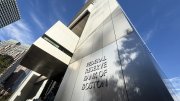Universities' financial managers this month will begin reporting their endowments’ investment results for fiscal year 2012, ended this past June 30. Early signs suggest that the robust returns on endowment assets recorded in fiscal 2010 and 2011—when the markets were recovering from the sharp losses incurred during the financial crises of late 2008 and early 2009—will not be repeated in the most recent annual cycle. Harvard Management Company reported an investment return, net of expenses, of 21.4 percent on endowment and related assets in fiscal 2011 and 11.0 percent the prior year, following the -27.3 percent return in fiscal 2009.
Bloomberg reports that the Princeton endowment likely realized investment returns of 0 to 5 percent, according to an interview with President Shirley Tilghman. Princeton’s endowment was valued at $17.1 billion at the end of fiscal 2011—behind only those of Harvard, Yale, and the University of Texas system. Like those other Ivy endowments, Princeton follows a diversified asset strategy, and makes use of illiquid investments, such as private equity. Princeton’s reported investment returns in fiscal 2011, 2010, and 2009, respectively, were 22 percent, 14.7 percent, and -24 percent. "Clearly, after two spectacular years," Tilghman told Bloomberg, "we're back on the ground again."
According to the Wilshire Associates Trust Universe Comparison Service, which surveys large institutional investors, various categories of such investors realized median returns of 0.37 percent to 3.68 percent in fiscal 2012—compared to median investment returns of 20.1 percent for its entire universe of such funds for the prior fiscal year. The Wilshire report emphasized the relatively strong performance of fixed-income investments during the period; equities—particularly international stocks—performed poorly (presumably reflecting the continuing Euromarket crisis and the recent sharp slowdown in developing-market economies, such as China).
The enormous California Public Employees’ Retirement System (CalPERS)—with assets under management of $233 billion—reported preliminary fiscal 2012 investment returns of 1 percent. That result, CalPERS reported, was boosted by a 15.9 percent return in commercial real-estate investments, an especially strong performance.
Neither the strategies nor the asset holdings of these institutions mirror Harvard’s. But they do suggest that returns may have fallen well short of the strong 2010-2011 returns that helped restore endowment losses recorded in fiscal 2009.
Given that distributions from the endowment continue to account for about one-third of University operating revenues (and that such distributions were budgeted to increase about 4 percent during fiscal 2012, following two years of reductions), a more subdued investment environment is likely to figure into Corporation decisions about future distributions. If Harvard's endowment returns are "back on the ground again," too, the arithmetic is daunting. A 5 percent return on endowment assets ($32 billion at the end of fiscal 2011) would total $1.6 billion—only slightly more than the likely distribution of $1.3 billion to $1.4 billion for operations and decapitalizations, yielding little growth apart from new gifts received. And a rate of return lower than that would soon reduce the value of the endowment (excluding gifts received), even without factoring in the effect of inflation. Just getting back to the $36.9-billion value of the endowment at the end of fiscal 2008, before the financial crash, may take some doing—and in the years since, new facilities have come on line, financial aid has increased, and other costs continue to rise (University expenses grew about 5 percent in fiscal 2011).
In light of the very uncertain prospects for the federal budget—and therefore funding of sponsored research—and the continuing pressure on tuition and financial-aid spending, the University is likely to continue to be cautious fiscally, and to press ahead with work on the capital campaign now in its quiet period of fundraising.








